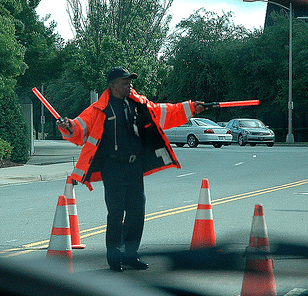 Reading Time: 4 minutes
Reading Time: 4 minutesThis is search engine optimization tip number twenty one in our continuing series of search engine optimization tips from search engine marketing company Vizion Interactive. All of our search engine optimization tips meant to be very specific, they should not take a lot of time to fix or review (to check to see if you are following the search engine optimization best practices), and will be rather “short and sweet” and directly to the point. In fact, this search engine optimization tip is short: understanding the differences between the different types of redirects and directing traffic to your site.
Not following along with our Search Engine Optimization Tips? Our last search engine optimization tip, search engine optimization tip 20, was about checking the whois of your domain name: checking the public domain record. Before that, in search engine optimization tip 19, was about code bloat and moving your JavaScript code to an external file. And before that, I wrote search engine optimization tip 18, which was about linking within sentences. The SEO tip before that, search engine optimization tip 17, was about links and your reputation and finding additional links to your site by searching at your favorite search engine for your name or your company name. The SEO tip before that was about creating a breadcrumb trail on your site. To find the previous search engine optimization tips, take a look at one of my previous SEO tips; you should find some links there. All of these “search engine optimization tips” are things I look at when analyzing a site or optimizing it for the search engines. Keep in mind, though, that this is only the beginning. There are a lot more search engine optimization tips coming in the future. In fact, to keep up with these SEO tips you might want to subscribe to our SEO RSS Feed.
There are many different reasons why you will need to redirect web site traffic to another location (another URL) on your site or even to another domain name that you own. There are several types of redirects that you can use, and although they all technically will send some from one web page to another web page there is only really one type of redirect that you will want to use: always use the 301 Permanent Redirect.
If you are a regular reader of this search engine optimization blog, you might recall that recently Google themselves did not set up the proper type of redirect when they released their Search Engine Optimization Guide. I am glad to report that apparently Google has taken our SEO advice: the domain name in question, brandonsbaseballcards.com, is now redirecting with a 301 Permanent Redirect to Google.com.
Types of Redirects
There are several types of redirects that you can use to redirect visitors to another web page or another web site. I’ve outlined each below and made some comments as to why or why not you would want to use it.
302 Temporary Redirect
The 302 redirect is essentially a “temporary” redirect. This type of redirect might be okay to set up if you are going to temporarily redirect visitors to another URL. I would say that if you need to redirect visitors for a few minutes or a few hours it might be okay to “temporarily” use it. But, since there are so many issues that can arise when using the 302 I tend to recommend that you never use it at all. In the past, there have been problems with domain name hijacking and even basic search engine ranking problems that occur when using a 302 Redirect. I wouldn’t use it.
JavaScript Redirect
There are ways to redirect human visitors using web browsers to view your site without redirecting the search engines. The search engines currently do not execute JavaScript code, so they won’t be redirected. If you want to hide something on your web page then you might use a JavaScript redirect to give content to the search engine spiders and not to the humans. This is typically a method that search engine spammers use, so if you’re using it then the search engines could potentially look at you in a negative light or even ban your site or penalize your site for using it. I wouldn’t use it.
Meta Refresh Redirect
The meta refresh is really an outdated type of redirect. Although it will still redirect visitors, it does not give the site you’re redirecting to any SEO value: so there’s really no need to use it.
301 Permanent Redirect
The 301 Permanent Redirect tells the search engines that you are permanently redirecting visitors to the new location: so since you’re telling them that this is a permanent change, they can rely on it. You are redirecting visitors, but at the same time passing on “link credit”, PageRank, and other SEO value to the site that you’re redirecting to. The search engines themselves recommend that we all use 301 Permanent Redirects to redirect visitors.
When you set up a 301 Permanent Redirect, the important thing to remember is that you are “transferring” SEO value (link value, PageRank, etc.) to the domain name you’re redirecting to: which is a good thing. If you use another type of redirect then you don’t get the SEO value passed to the new location.
A Simple Link
I have also seen people use a simple web page: they set up a web page and add a message telling visitors to click on a link that they provide to go to the new location (or the new site). While it might be a good idea to tell your visitors that you are now at a new location (a new domain name, a new URL), you’re still not passing any SEO value to the new location. So, while that might be okay I don’t necessarily recommend using it.
What’s the bottom line here? We have seen Google themselves set up a 302 Temporary Redirect from an example site they have in their Search Engine Optimization Starter Guide and then change it to a 301 Permanent Redirect. This is enough proof for me that the proper type of redirect to use when redirecting visitors is a 301 Permanent Redirect. While there are other types of redirects that you can use, you should be concerned about passing search engine optimization values (Link Credit, PageRank, etc.) to the new location.
At Vizion Interactive, we have the expertise, experience, and enthusiasm to get results and keep clients happy! Learn more about how our SEO Audits, Local Listing Management, Website Redesign Consulting, and B2B digital marketing services can increase sales and boost your ROI. But don’t just take our word for it, check out what our clients have to say, along with our case studies.




